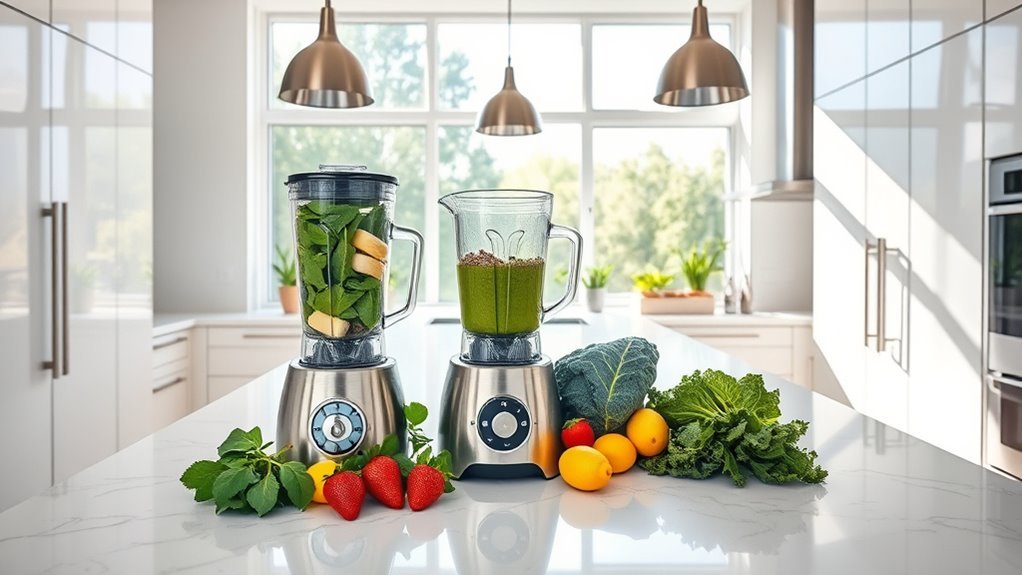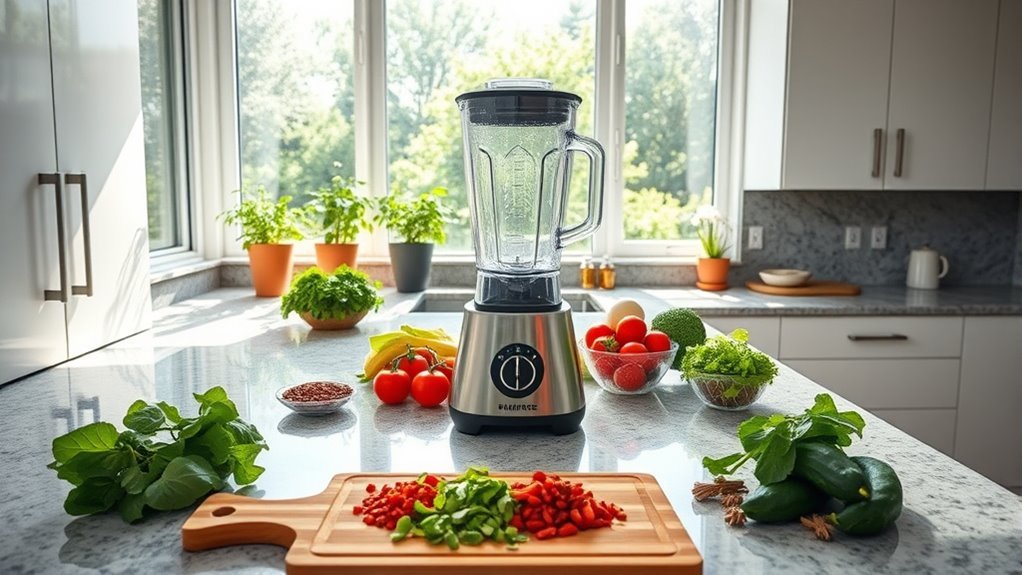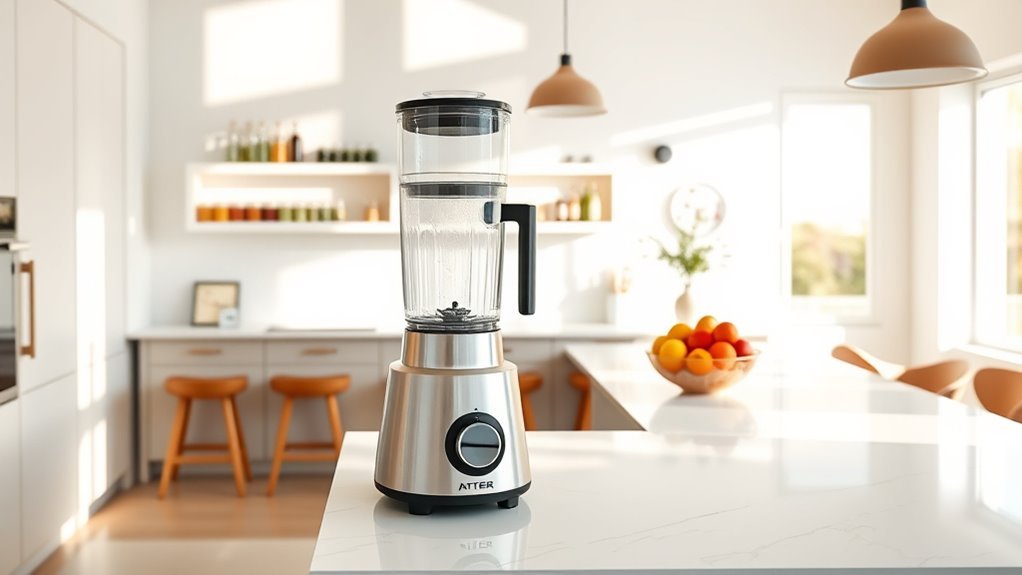We’ll tell you straight: grinding speed makes or breaks your spices. Start slow with delicate aromatics like nutmeg and cardamom to preserve those precious oils. Dial up to medium for black pepper and ginger, saving high speeds for tough customers like cloves and star anise. Match pressure to speed – light touch for fine powders, firm hand for coarse grinds. Master these basics, and there’s a whole world of flavor waiting.
The Science Behind Optimal Grinding Speeds

The delicate dance between grinding speed and spice quality forms the foundation of expert herb processing. When we’re grinding herbs, speed isn’t just about efficiency – it’s about preserving those precious essential oils that give spices their character.
Even though faster grinding might seem appealing, it’s often counterproductive. Here’s why: High-speed grinding generates heat that destroys volatile compounds, while uneven particle sizes mess with extraction quality.
We’ve found that slower speeds typically yield better results, especially with moisture content variations in different herbs. Think of it as a precision operation rather than a race. The key? Match your grinding speed to your herb’s specific characteristics.
Soft, delicate herbs demand gentler treatment, while hardier specimens can handle more aggressive processing. It’s about finding that sweet spot where speed meets quality. Additionally, using a high-performance blender can enhance your grinding process by providing the necessary power and control for optimal results.
Essential Speed Settings for Different Spice Types
While mastering spice grinding requires skill, understanding ideal speed settings for different spices is non-negotiable.
We’ll get straight to what works: delicate spices like nutmeg and mace need slow speeds to protect their essential oils and maximize aroma and flavor.
For best results with black pepper and cardamom, stick to medium speeds – this preserves their aromatic profiles while ensuring even grinding.
Don’t baby those tough customers like cloves and star anise – they need high speeds to break down properly.
Ginger and turmeric? Keep them at medium speed for consistent powder without sacrificing their natural oils.
Remember, these aren’t just suggestions – they’re your blueprint for success.
Play with your grinder’s speed settings to nail the perfect consistency, whether you’re after fine powder or coarse texture. Additionally, utilizing a high-performance blender can further enhance your spice grinding results due to its motor power exceeding 1,000 watts.
Achieving Perfect Texture Through Speed Control

Speed settings lay the foundation, but let’s talk real texture control. We’ll need an electric spice grinder that delivers perfect balance between speed and another essential factor – pressure. Let’s master how to achieve those enthralling flavors and aromas through precise speed management.
| Speed Level | Texture Result | Best For | Pressure | Time |
|---|---|---|---|---|
| Ultra Slow | Extra Fine | Delicates | Light | 45s |
| Slow | Fine | Aromatics | Medium | 30s |
| Medium | Medium | Seeds | Firm | 20s |
| Fast | Coarse | Bark | Heavy | 15s |
| Pulse | Variable | Blends | Varied | 10s |
Remember: We’re not just grinding – we’re orchestrating a symphony of texture. Monitor your speed constantly, adjust when needed, and don’t rush. The perfect grind demands patience and precision.
Temperature Management in High-Speed Grinding
Let’s get serious about temperature management. Always follow manufacturers’ instructions on speed settings, but here’s our pro tip: slower is smarter.
We’ve seen countless spice blends ruined by overzealous grinding. Think of cardamom and nutmeg – they’re especially vulnerable to heat damage. Their essential oils evaporate faster than your morning coffee cools.
Variable speed settings are your best friend here. Start slow, monitor the heat, and adjust accordingly.
Your taste buds will thank you for the extra attention.
Timing and Speed Combinations for Maximum Flavor

Now that we’ve got a handle on heat control, it’s time to master the art of timing and speed combinations.
We’ve found that slower grinding speeds are your secret weapon for extracting maximum flavor from delicate herbs. Your stainless steel grinder isn’t just a tool – it’s your flavor preservation system.
Here’s the cold, hard truth: fast grinding might save time, but it’ll massacre those precious volatile compounds. We’re after ideal extraction, not speed records.
Start slow, maintain consistent pressure, and watch those herbs transform into aromatic magic. For finer textures, dial back the speed even further. It’s simple physics – less heat equals more flavor preservation.
Remember: uniform particle size isn’t just for show – it’s vital for even flavor distribution in your final dish.
Frequently Asked Questions
What Is the Best Method to Grind Spices?
We’ll get the best results using either hand grinding for small batches or electric grinders for larger spice blends, ensuring slow speeds to preserve aroma and maintain flavor consistency.
What Is in Spices?
Like nature’s colorful gems, we’ll find spices contain essential oils, aromatic compounds, and antioxidants. They’re packed with unique flavor profiles and health benefits that enhance our cooking through diverse applications.
What Do Indians Use to Grind Spices?
We use traditional tools like silbatta (stone grinder) and khalbatta (mortar-pestle) for our spice blends, though regional variations exist. Modern Indian kitchens also embrace electric grinders for different grinding techniques.
Can I Use a Food Processor to Grind Spices?
Like a hammer for a thumbtack, a food processor isn’t ideal for spices. We can use it, but we’ll get better results with dedicated spice grinders for finer consistency and flavor preservation.

